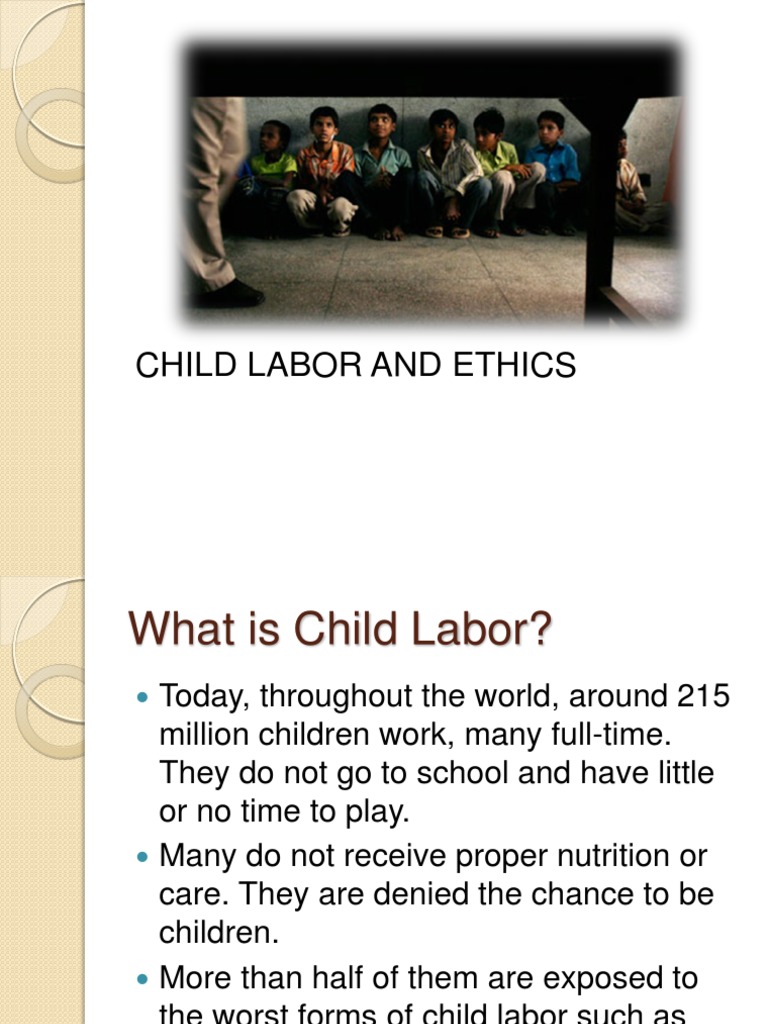In examining the intricate tapestry of moral relativism concerning child labor, one finds oneself ensnared in a labyrinth of ethical conundrums, where the threads of culture, economics, and humanitarianism entwine. The notion of child labor is often perceived through a prism of universal standards, yet various sociocultural contexts color interpretations and responses. The moral relativism surrounding this issue invites scrutiny into the values and beliefs held by different societies, leading us to question the very foundations upon which we delineate right from wrong.
To understand the complexities of moral relativism as it pertains to child labor, we must first grasp the concept itself. Moral relativism posits that ethical standards and moral principles are rooted not in absolute truths but in cultural, social, or personal perspectives. In the realm of child labor, this perspective allows for divergent views on what constitutes ethical treatment of children. While some cultures perceive labor as a rite of passage that instills responsibility and resilience, others view it as a violation of fundamental human rights. Herein lies the rub; the same action can be deconstructed into varied moral interpretations, effectively underlining the relativistic nature of ethics.
Consider the metaphor of a kaleidoscope. Just as shifting the glass pieces within alters the patterns and images, so too does the lens of culture shape our perception of child labor. For instance, in economically disadvantaged regions, children working to support their families may be seen as integral to survival. Their labor is not merely an economic necessity but a cultural norm, woven into the fabric of community life. In stark contrast, in more affluent societies, child labor is often vilified, scrutinized for infringing on the sanctity of childhood. The kaleidoscopic view of child labor, therefore, is multifaceted, with each perspective reflecting a different truth shaped by socio-economic realities.
Delving deeper into this metaphor, one may find that the colors within the kaleidoscope represent varying attitudes toward childhood itself. In some communities, childhood is imbued with a sense of obligation and duty. Young children are perceived as stakeholders in their family’s welfare, taught from a tender age that their contributions can alter the trajectory of their familial fortunes. This stands in stark contrast to the perspective of childhood celebrated as a time for carefree exploration and learning, free from the shackles of adult responsibilities. The dissonance between these philosophies poses a significant challenge in the discourse surrounding child labor.
The ethical ramifications of this debate reach far beyond simplistic binaries of right and wrong. When engaging with the concept of child labor through a relativistic lens, one must also consider the broader implications of socio-economic disparities. In many developing nations, systemic poverty serves as a backdrop for child labor practices. Families often resort to laboring children not out of moral neglect, but rather from dire necessity. Economic structures perpetuate cycles of poverty, leading to decisions that may seem unthinkable in more affluent contexts. In this light, moral relativism provides a crucial understanding: ethical judgments cannot be fully disentangled from economic realities surrounding those engaged in child labor.
Yet, the problem of child labor is not a static phenomenon. Fluctuations in global markets and evolving social values continuously reshape societal perceptions. An increasing awareness of children’s rights, spurred by international humanitarian organizations, has catalyzed a shift in the narrative surrounding child labor. Grassroots movements advocating for children’s rights have emerged, garnering substantial support. These movements underscore a growing consensus that advocates for the recognition of children’s rights as human rights, irrespective of local cultural contexts.
This evolution echoes the principles of moral absolutism, a framework that posits certain ethical standards as universally applicable and inviolable. This raises critical questions: Should there be a universal standard against child labor? Or is it permissible for cultural nuances to dictate ethical norms surrounding childhood and labor? Those who champion moral relativism contend that imposing a singular standard disregards the rich tapestry of human experience. Conversely, proponents of moral absolutism argue that the sanctity of childhood transcends cultural boundaries and that protecting children from exploitation is a moral imperative.
As the debate rages on, it is imperative to seek a synthesis of these conflicting perspectives. One way to reconcile moral relativism with universal ethical standards is through ongoing dialogue and education. Initiatives that facilitate cross-cultural exchanges can foster understanding and empathy, dispelling myths surrounding different moral frameworks. Additionally, developing policies that respect cultural differences while prioritizing children’s rights may ultimately provide a path forward.
In conclusion, the discourse on moral relativism in the context of child labor embodies a profound ethical dilemma woven into the very fabric of globalization. Just as beautiful intricacies emerge from a kaleidoscope, the diverse perspectives on child labor elucidate the myriad complexities of human ethics. Each viewpoint offers valuable insights, albeit through differing lenses. To effectuate meaningful change, it is not enough to adopt a single perspective; rather, we must embrace the richness of diverse experiences and strive for a collective understanding that honors the indelible potential of every child as a being deserving of dignified existence.
